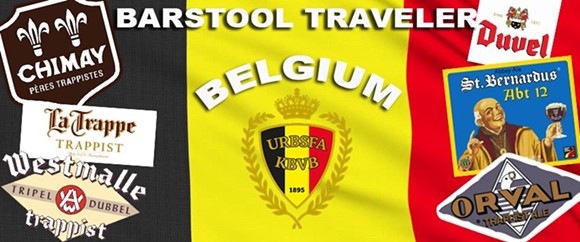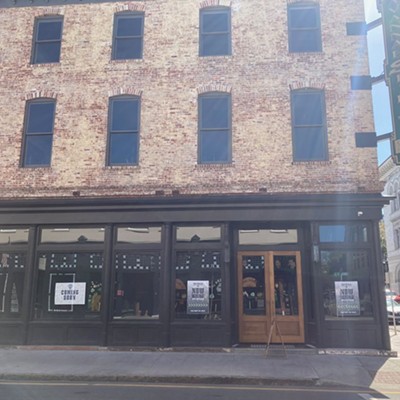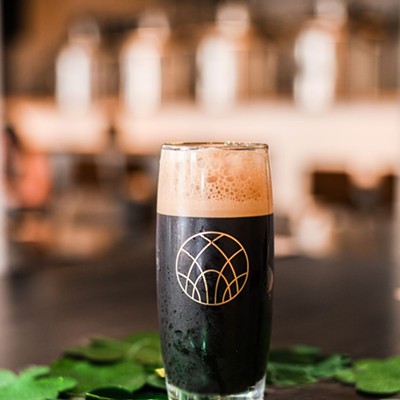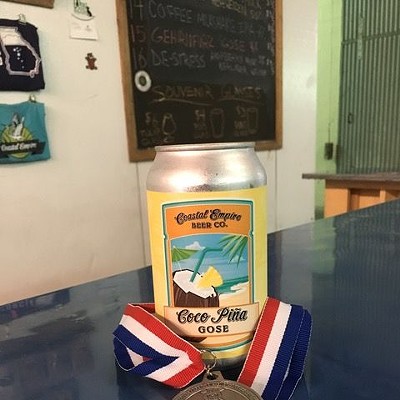THE HISTORY of Belgian beer parallels that of its German neighbors. Rich in land that produced the ingredients necessary for brewing, Belgium was home to numerous breweries and preferred the drink to wine.
Beer was further ensconced in Belgium with the arrival of Christianity and monks who began brewing to financially support their monasteries. Today these “monk beers” are often strongly associated with Belgian beer though Belgian beer, as in any country, has no limits.
First, some terminology connected to many of the Belgian beers you’ll see on local shelves. Trappist beers are often considered to be synonymous with Belgian beer. The title of Trappist beer denotes a place of origin and is reserved for production houses that must meet a strict set of guidelines.
Trappists are a branch of the cloistered Catholic Order of Cistercians of the Strict Observance. The original home of the Order was La Trappe Abbey located in Normandy, France and yields the Trappist name.
The rules the Trappist breweries must follow are three fold. The beer must be produced in a monastery, the monks must play a role in the brewing process and the sales of the beer must support the monastery or its social programs.
Only ten breweries meet this set of standards. Six of them are in Belgium. The other four are in the U.S., Austria and two are in the Netherlands. There are no restrictions on what type of beers are produced, though there are some historical considerations we’ll touch on below.
Abbey beers are sometimes confused with Trappist beers but are distinctly different. Abbey beers come in two designations, certified Abbey or not.
Certified abbey beers can be produced by a non-Trappist monastery or a monastery that licenses to a commercial brewery to produce their beers, though the monks still need to be part of the brewing process. This certification has some the same financial restrictions as the Trappist breweries.
Non-certified abbey ales can be everything: monasteries that cannot or don’t want to meet the restrictions of certification or even breweries who have no religious affiliations but market by putting a monk on the label.
Trappist and abbey breweries can produce any type of beer but there are three styles that they are most often associated with; dubbel, tripel, and quads. Each has its distinctive qualities to look for.
The names imply that these styles grow off of each other, and there was once a beer referred to as a single but it is no longer marketed that way, but that is not entirely accurate.
The numbering system may refer to how much malt was used in brewing but some refute that theory. The answer to where these designations came from is probably lost to history but may have to do with the overall strength, read ABV, of each of the styles.
Dubbel: Dubbels can be expected to have a strong malt backbone. The malt can express itself in a range of flavors from toast to chocolate or a nutty flavor. Dark fruit; raisin, fig, plum and cherry are common flavors as is some spice. Hops provide an overall bitterness but no strong hop flavors. Dubbels tend to be in the amber to brown color range and often have brown or bruin in the name.
Tripel: Tripels tend to be slightly stronger than dubbels, 7-10% ABV to the dubbels 6-7%, and the differences don’t end there. Triples are much lighter in color than dubbels and rely less on malt flavors. In fact tripels tend to have balanced palate compared to dubbels though yeast flavors like banana, can be left to shine through. Another distinguishing factor is the carbonation, tripels are often highly carbonated compared to other beers.
Quadrupel/Abt: Quads and Abt’s are similar in flavor. The distinguishing characteristic is the color, Abts are darker, quads tend toward the lighter range. Like dubbels, hop presence in both is minimal with malt and dark fruits being the strongest of the flavors. Quads tend to be richer and bolder than dubbels and the alcohol content is greater in ABV (usually over 10%) and is far more prominent in the flavor.
Some of Belgium’s best beers and styles deserve their own column so we’ll talk about lambics and other Belgian style beers later but here are a few of the best dubbels, tripels and quads to tide you over until then.
Orval Dubbel: Orval’s dubbel scores a 99 on Rate beer, high praise for any beer. Fresh with a slightly fruity sour taste like a good strawberry. This dubbel is a great place to start in your journey through Belgian beers.
Westmalle Tripel: A bright golden color, honey and apricot are flavors that will shine in Westmalle’s tripel.
LaTrappe Quadrupel: LaTrappes version still has a strong malt forward flavor but has a stronger hop profile to make it distinctly different from most of the other Belgian quads on market.
Westvleteren XII is considered by many to be the best beer in the world. It’s incredibly difficult to obtain as it is released at the brewery in limited quantities just once a year but St. Bernardus ABT 12 is supposed to be brewed using the same recipe as “Westy 12.” Dark fruits and vanilla will be the dominant flavors flavors in ABT 12.

























